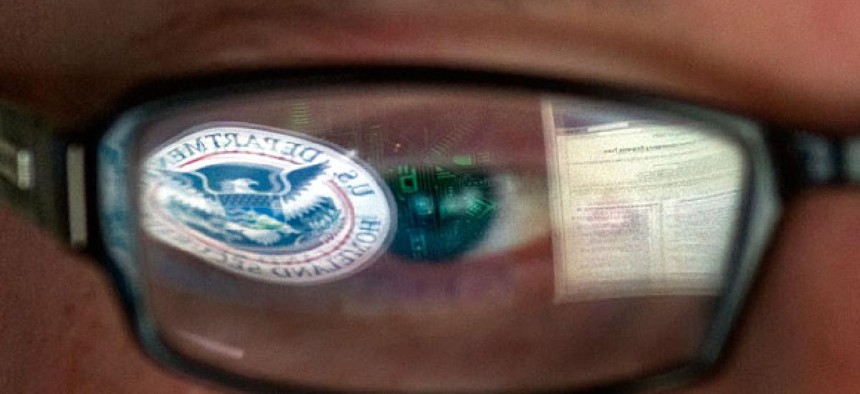Homeland Security Faulted for Program Fragmentation
House members, GAO call for stronger management in acquisition, IT, finances and human capital.
This story has been updated.
Ten years after it began the merger of 22 federal agencies, the Homeland Security Department has a ways to go in streamlining management and curbing program overlap, the Government Accountability Office said on Friday.
Out of 1,800 recommendations GAO has made over a decade to help strengthen programs and operations, DHS has implemented more than 60 percent and has actions under way to address others, Cathleen Berrick, managing director of GAO’s Homeland Security and Justice programs, told a hearing of the House Homeland Security Subcommittee on Oversight and Management Efficiency. For example, “DHS does not have a department-wide policy defining research and development or guidance directing components how to report R&D activities,” Berrick said in prepared testimony. “Thus, DHS does not know its total annual investment in R&D, which limits its ability to oversee components’ R&D efforts.”
A second area that needs improvement, GAO said, is the Transportation Security Administration’s efforts to reduce the cost of projects related to installation of new airport baggage screening systems. By signing new financial agreements to reduce the federal cost share, TSA could achieve cost efficiencies of up to $300 million by 2030, GAO said.
In reviewing past GAO recommendations and DHS and congressional responses, GAO said that of the 42 actions recommended from reports in the past two years, five had been addressed as of March 2013 (12 percent), 24 had been partially addressed (57 percent), and the remaining 13 had not been addressed (31 percent). More work is needed, however, to “further strengthen its acquisition, information technology, and financial and human capital management functions. Of the 31 actions and outcomes GAO identified as important to addressing this area,” the testimony said, “DHS has fully or mostly addressed eight, partially addressed 16 and initiated seven.”
While challenges remain across its missions, GAO continued, “DHS has made considerable progress since 2003 in transforming its original component agencies into a single department. As a result, in its 2013 biennial high-risk update, GAO narrowed the scope of the challenge related to DHS and changed its focus and name from “Implementing and Transforming the Department of Homeland Security” to “Strengthening the Department of Homeland Security Management Functions.”
Anne Richards, assistant DHS inspector general for audits, testified that her office in the past decade has “made over 8,000 recommendations to the department and its components, identifying over $2.6 billion in questioned costs, unsupported costs or funds that could be put to better use. Approximately 15 percent of these recommendations remain open, representing about $650 million” in potential savings.
Subcommittee Chairman Rep. Jeff Duncan, R-S.C., was more skeptical of progress by the third-largest agency, which has an annual budget of $60 billion. “Unfortunately, DHS has not yet implemented key GAO and IG recommendations, which has led to confusion in mission and execution and poor use of American tax dollars in critical areas,” he said. In his opening statement, he stressed GAO’s recent broader finding on duplication and cost savings opportunities governmentwide. “When my constituents see unnecessary duplication of mission or programs that expend valuable resources, a reluctance to learn from best practices within the federal government or private sector, or an unwillingness to make changes identified in audits as ways to improve, it can be very frustrating.”
The House committee said on Monday that it did not invite DHS to testify. DHS did not respond to requests for comment.
NEXT STORY: Would You Take a One Way Ticket to Mars?




